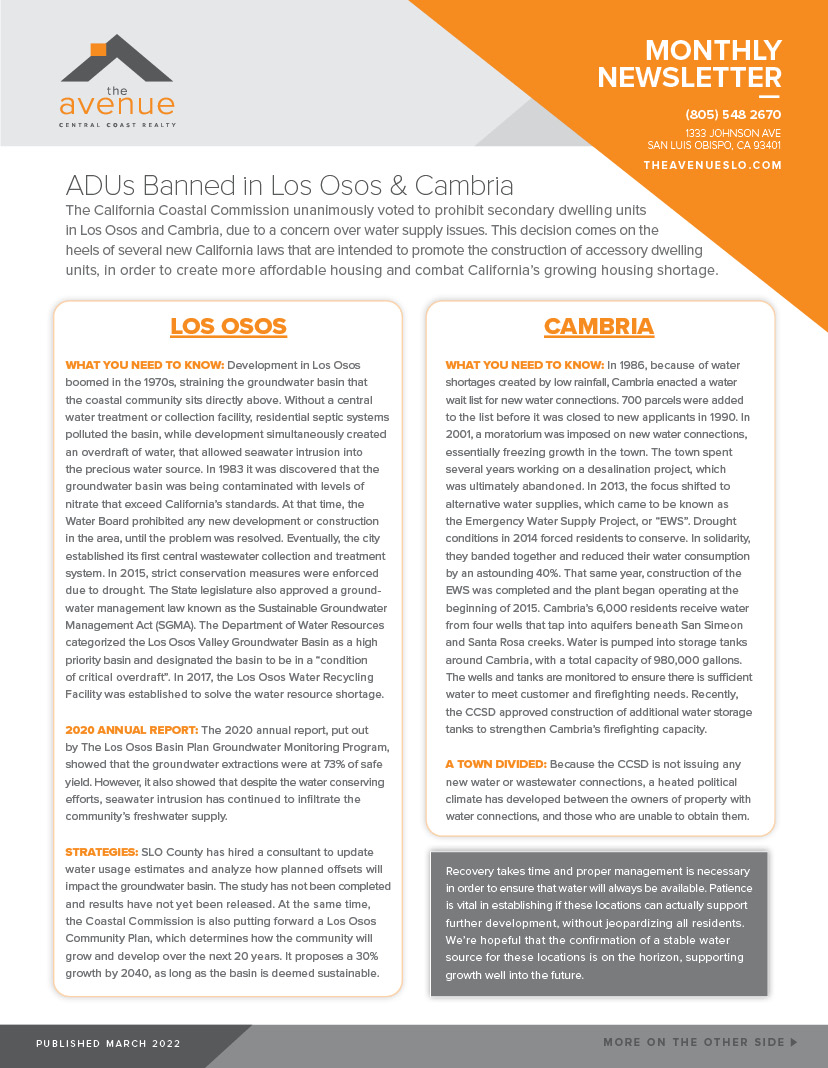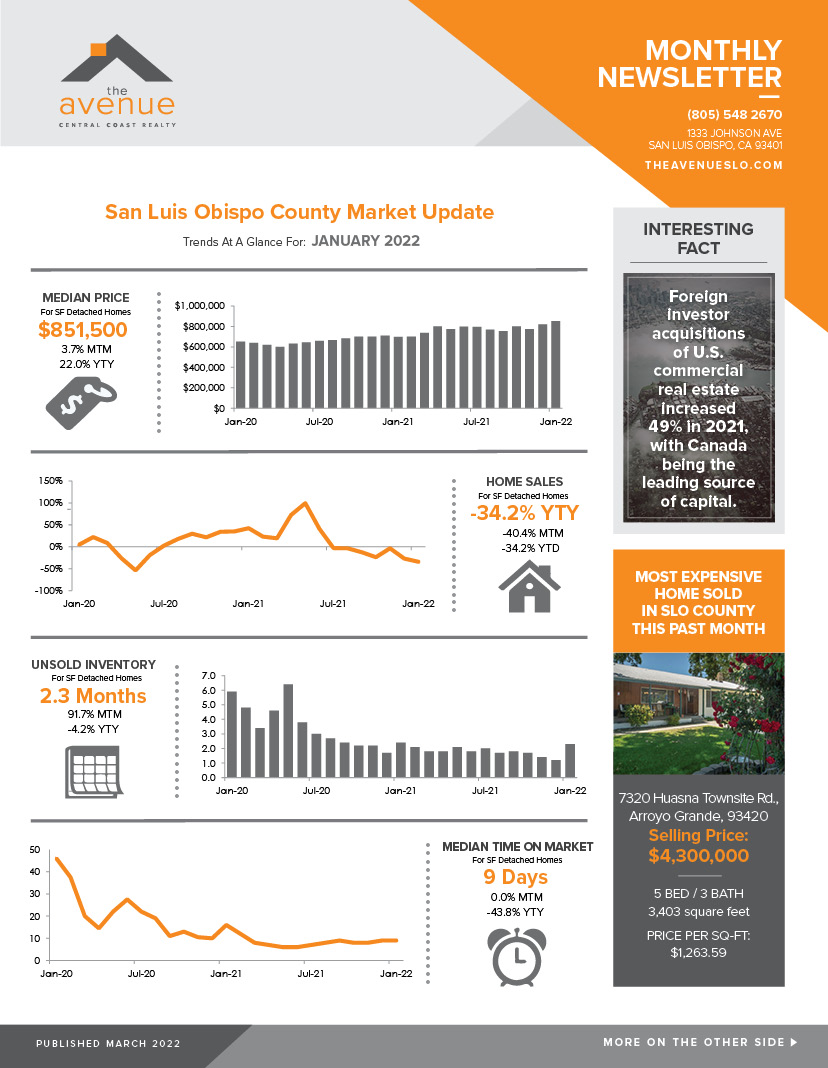ADUs Banned in Los Osos & Cambria
The California Coastal Commission unanimously voted to prohibit secondary dwelling units in Los Osos and Cambria, due to a concern over water supply issues. This decision comes on the heels of several new California laws that are intended to promote the construction of accessory dwelling units, in order to create more affordable housing and combat California’s growing housing shortage.
Los Osos
What you need to know: Development in Los Osos boomed in the 1970s, straining the groundwater basin that the coastal community sits directly above. Without a central water treatment or collection facility, residential septic systems polluted the basin, while development simultaneously created an overdraft of water, that allowed seawater intrusion into the precious water source. In 1983 it was discovered that the groundwater basin was being contaminated with levels of nitrate that exceed California’s standards. At that time, the Water Board prohibited any new development or construction in the area, until the problem was resolved. Eventually, the city established its first central wastewater collection and treatment system. In 2015, strict conservation measures were enforced due to drought. The State legislature also approved a groundwater management law known as the Sustainable Groundwater Management Act (SGMA). The Department of Water Resources categorized the Los Osos Valley Groundwater Basin as a high priority basin and designated the basin to be in a “condition of critical overdraft”. In 2017, the Los Osos Water Recycling Facility was established to solve the water resource shortage.
2020 annual report: The 2020 annual report, put out by The Los Osos Basin Plan Groundwater Monitoring Program, showed that the groundwater extractions were at 73% of safe yield. However, it also showed that despite the water conserving efforts, seawater intrusion has continued to infiltrate the community’s freshwater supply.
Strategies: SLO County has hired a consultant to update water usage estimates and analyze how planned offsets will impact the groundwater basin. The study has not been completed and results have not yet been released. At the same time, the Coastal Commission is also putting forward a Los Osos Community Plan, which determines how the community will grow and develop over the next 20 years. It proposes a 30% growth by 2040, as long as the basin is deemed sustainable.
Cambria
what you need to know: In 1986, because of water shortages created by low rainfall, Cambria enacted a water wait list for new water connections. 700 parcels were added to the list before it was closed to new applicants in 1990. In 2001, a moratorium was imposed on new water connections, essentially freezing growth in the town. The town spent several years working on a desalination project, which was ultimately abandoned. In 2013, the focus shifted to alternative water supplies, which came to be known as the Emergency Water Supply Project, or “EWS”. Drought conditions in 2014 forced residents to conserve. In solidarity, they banded together and reduced their water consumption by an astounding 40%. That same year, construction of the EWS was completed and the plant began operating at the beginning of 2015. Cambria’s 6,000 residents receive water from four wells that tap into aquifers beneath San Simeon and Santa Rosa creeks. Water is pumped into storage tanks around Cambria, with a total capacity of 980,000 gallons. The wells and tanks are monitored to ensure there is sufficient water to meet customer and firefighting needs. Recently, the CCSD approved construction of additional water storage tanks to strengthen Cambria’s firefighting capacity.
A town divided: Because the CCSD is not issuing any new water or wastewater connections, a heated political climate has developed between the owners of property with water connections, and those who are unable to obtain them.
Recovery takes time and proper management is necessary in order to ensure that water will always be available. Patience is vital in establishing if these locations can actually support further development, without jeopardizing all residents. We’re hopeful that the confirmation of a stable water source for these locations is on the horizon, supporting growth well into the future.




